Understanding the 555 Timer IC: Functionality, Modes, and Technical Specifications
2024-05-15
17553
Catalog

Figure 1: 555 Timer IC
What Is a 555 Timer IC?
The 555 timer IC is an important tool in electronic design and operates over a wide voltage range from 4.5V to 15V DC. This multifunctional integrated circuit can create precisely timed delays and oscillations. It consists of various internal components such as transistors, resistors, diodes, and flip-flops. These components coordinate to perform the critical operations of the IC.

Figure 2: 555 Timer IC
After power is applied, transistors within the IC manage the timing of the current flow. Resistors help control this current flow, ensuring that the circuit operates within safe parameters. Diodes protect circuits by preventing current from flowing back, which can damage the IC. Finally, the flip-flop stores information about timing and periodically releases it to create delays or oscillations.

Figure 3: 555 Circuit Symbol
Three Working Modes of 555 Timer IC
Monostable Mode (Single Trigger Mode)
The monostable mode of the 555 timer is activated by a single flip-flop. It generates a one-time output pulse whose duration is defined by the connected external capacitor and resistor. To determine the pulse width, use the formula T = 1.1 × R × C, where T is the duration, R is the resistance, and C is the capacitance. This mode is particularly useful for tasks that require a single precise pulse, such as timing mechanisms or event-triggered responses. When setting up this mode, choosing the correct resistor and capacitor values can achieve the desired pulse length and stability. Operators must carefully match these components to meet the specific requirements of the application.

Figure 4: Monostable Mode
Bistable Mode (Bi-Directional Trigger Mode)
In bistable mode, the 555 timer functions like a basic flip-flop switch. It switches between two stable states when receiving external signals. This feature enables the creation of simple logic circuits (such as toggle switches or memory cells). To configure a bistable setting, the operator typically manipulates the connections between the timer pins and a power or ground source. This model provides a visual view of how an external trigger affects the timer output, allowing direct control of connected devices or other elements of the circuit.

Figure 5: Bistable Mode
Unstable Mode (Free Oscillation Mode)
Astable mode converts the 555 timer into a continuous square wave generator, called a multivibrator. In this configuration, the frequency and duty cycle of the waveform are determined by two resistors, R1 and R2, and capacitor C. The equations for charge and discharge time are t1 = 0.693 × (R1 + R2) × C and t2 = 0.693 × R2 × C respectively, and the frequency is given by f = 1.44 / ((R1 + 2 × R2) × C). Adjusting R1, R2, and C allows precise control of the signal's characteristics for everything from blinking an LED to generating an audio signal. Designing and fine-tuning these parameters can provide practical experience in shaping the output to meet specific project requirements.

Figure 6: Unstable Mode
Technical Specifications of 555 Timer IC
The 555 timer is an essential and versatile component in modern electronic circuit design due to its adaptability in a variety of applications. Not only does it function as a flip-flop and multivibrator, but it also has specific technical features that enhance its functionality in different settings.

Figure 7: 555 Timer IC
Supply Voltage Range: The 555 timer operates efficiently with supply voltages from +5V to +18V. This broad range accommodates its use in different equipment and experimental setups. Operators should select a power supply that matches the required voltage level to maximize IC stability and performance.
Load current capability: The 555 timer is capable of handling load currents up to 200mA, allowing it to directly power medium-sized loads such as small motors or LED light strips. This high current capability eliminates the need for additional power amplifiers, simplifying circuit design and reducing hardware requirements.
Timing Range and Frequency Adjustment: External resistors and capacitors can be configured to set timing durations from microseconds to minutes, with frequency adjustments ranging up to hundreds of kilohertz. This flexibility allows operators to fine-tune equipment to specific needs, such as synchronizing with specific audio-visual outputs in devices such as signal generators or decorative lights.
High current output: The output pin can provide up to 200mA, enough to directly drive TTL logic circuits. This feature reduces reliance on auxiliary components such as repeaters or additional transistors, helping to design leaner and more cost-effective electronic architectures.
Temperature stability: The 555 timer has a stability rate of 50ppm per degree Celsius, maintaining precise timing accuracy at different temperatures. Ensure consistent performance whether used indoors or outdoors in applications exposed to fluctuating environmental conditions.
Duty Cycle Adjustment: The 555 timer's adjustable duty cycle increases control of the output signal, making it ideal for custom waveform generation in PWM applications. Adjusting the duty cycle provides fine control over variables such as light intensity or motor speed, allowing for more precise management of device functionality.
Power consumption and input logic compatibility: The maximum power consumption of the 555 timer is 600mW, energy saving. Its trigger pulse and reset input logic are compatible and can be easily integrated with other digital components to support complex circuit designs without compromising system integrity.
IC 555 Pin Configuration
Each pin on the IC 555 has a specific function. Below is a detailed description of what each pin does and how to use them effectively.

Figure 8: 555 Pin Arrangement
Pin 1 - Ground Pin (GND): This is the ground pin and must be connected directly to the negative terminal of the power supply. Make sure this connection is tight and free of any resistance, as improper grounding can cause voltage irregularities, which can cause the chip to overheat and reduce circuit stability.
Pin 2 - Trigger Pin (TRIG): The trigger pin initiates the operation of the timer. It is sensitive to voltage drops below one-third of the supply voltage. To set it up, a resistor and a capacitor are usually connected to adjust its sensitivity. The handling pin's delicate trigger current of just 0.5uA maintains clean, stable triggering without any signal noise.
Pin 3 - Output Pin (OUT): This output pin changes state with the timer period, going high (near Vcc) when triggered and low (just above 0V) when not triggered. It can support up to 200mA, which is enough to directly power small to medium-sized devices such as relays and LEDs.
Pin 4 - Reset Pin (RESET): To keep the timer running properly, this pin should be connected to Vcc high. If pulled low (below 0.7V), the timer will stop and reset the output to low. This reset feature is useful for suddenly stopping a timer or initializing a new timing sequence.
Pin 5 - Control Voltage Pin (CV): Internally connected to the 2/3 Vcc voltage divider, this pin allows the timing period to be adjusted externally using a DC voltage. If not used, it is recommended to connect a 0.01uF capacitor to this pin to minimize noise and stabilize timing against external interference.
Pin 6 - Threshold Pin (THRES): This pin ends the timing cycle when the voltage on this pin reaches or exceeds 2/3 of Vcc. Correctly configured external resistors and capacitors allow precise management of the timing period.
Pin 7 - Discharge Pin (DISCH): This provides a discharge path for the timing capacitor through an internal transistor. Make sure the discharge current does not exceed 50mA to protect the transistor and maintain accurate cycle repetition.
Pin 8 - Positive Supply Pin (VCC): Connected directly to the positive side of the power supply, this pin powers the IC. The typical voltage range for a standard 555 IC is 5V to 18V DC. For applications requiring lower power consumption, CMOS versions such as the 7555 are preferred, supporting a voltage range from 3V to 18V.
Trigger Mechanism of Monostable Circuit IC2
In a monostable circuit setup, the connections and interactions between IC1 and IC2 can be precisely controlled and operated.
Pin 3 of IC1 is set up to transmit a square wave signal. Between these two ICs, capacitor C2 (capacitance value 0.1μF). It modifies a square wave into a form that contains positive and negative pulses. Because IC2 is specifically designed to respond to falling edges, this means that it triggers a high-to-low signal transition.
Proper installation and ensuring the functionality of capacitor C2, any placement errors or capacitor failure may result in incorrect timing or erratic circuit behavior, affecting overall response time.
When the signal from IC1 changes from high to low, it passes through capacitor C2 to pin 2 of IC2. This transition activates IC2, causing its pin 3 output to go high for approximately 0.5 seconds. This output duration is typically used to power a buzzer, generating a half-second audible signal. Accurate measurement and calibration of this half-second interval is important, especially when the duration of the buzzer's sound affects the intended use of the circuit.
The frequency at which IC2 triggers can be adjusted by manipulating the variable resistors R1 and R2 on IC1. For example, if IC2 is set to activate every 60 seconds, changing these resistors will change the time interval at which the buzzer sounds. This is accomplished by varying the frequency of the square wave generated by IC1, which in turn adjusts the firing frequency of IC2's monostable operation.
Although changing the value of capacitor C1 can also affect timing, trimming the resistor is usually preferred. Resistors not only provide a cost-effective solution but are also more readily available and durable. In practice, choosing the correct resistors and capacitors is key to maintaining circuit stability and reliability over the long term.
Design of 555 Timer Tester
The 555 timer tester is a device specially designed to test the 555 timer IC quickly and accurately. It uses an astable multivibrator circuit configuration that includes 500 kΩ (R1), 1 MΩ (R2) resistors, and 0.2 microfarad (C1) capacitor. This setup operates at low frequency, simplifying observation of the output waveform.
The tester's simplicity lies in its use of minimal components, which increases its efficiency and stability under a variety of operating conditions. It is designed to run on either a 9V power adapter or a 9V PP3 battery. The choice between battery power and adapter depends on the user's need for portability or long-term stationary use.
For ease of use, the tester includes an 8-pin socket that allows quick and easy insertion or replacement of the 555 timer IC. The socket minimizes the need for repeated soldering, protects the IC from potential thermal damage, and speeds up the testing process.
The operating frequency of the tester can be adjusted by changing the values of R1, R2, and C1. The theoretical operating frequency is about 2.8Hz, and the output LED flashes about 3 times per second, which can directly and intuitively confirm the function of the IC. Continuous flashing at this rate indicates that the timer is functioning properly.
An LED is connected to the output pin (pin 3) in series with a 10KΩ resistor and acts as a direct indicator of the status of the IC. Observing the blinking pattern of this LED provides immediate visual confirmation of operation at the expected frequency.
Assembling the tester circuit on a common PCB results in lower production costs and compact size of the device, enhancing its portability. This practical and cost-effective design is ideal for users who frequently need to test their 555 timers in different locations.
Infrared Blocker Using 555 Timer
The 555 timer builds an infrared (IR) interceptor capable of jamming the signal from your TV remote control. The 555 timer is configured in astable mode, allowing it to emit continuous high-frequency pulses of 38KHz at a 60% duty cycle, matching the typical frequencies of TV remote signals, and effectively jamming them.

Figure 9: Circuit Diagram of 555 Timer Tester
Pin configuration for 555 timer operation:
Pin 1 (GND): Directly connected to the ground to ensure the overall stability of the circuit.
Pin 2 and Pin 6 (Trigger and Threshold): These pins are cycled together, which is standard practice in non-stable mode to maintain endless oscillations.
Pin 3 (Output): This pin is connected to the base of the NPN transistor (BC547), which acts as a switch that controls the activation of the IR diode.
Pin 4 and Pin 7: These pins are connected through a 1kΩ resistor and have a reset function to prevent the oscillation from accidentally stopping.
Pin 5: Connected to ground via a 0.01μF capacitor to stabilize the control voltage and minimize output inconsistency due to power supply fluctuations.
Pin 8 (VCC): This pin provides the voltage required to power the circuit.
The emitter of the BC547 transistor is connected to the ground and its collector is connected to the 6V DC supply and is connected by a 100Ω resistor and an IR diode. This setup allows the transistor to activate when the output of the 555 timer goes high, driving the infrared diode to emit light at 38KHz.
When assembling and calibrating the circuit, precise adjustments to the resistors and capacitors allow the transmit frequency to accurately match that of the TV remote. Because even a slight frequency mismatch can lead to ineffective signal blocking. Proper installation and wiring of transistors and infrared diodes affect successful operation.
Once properly configured and activated, the circuit continuously emits 38KHz infrared pulses. These pulses drown out and block the signal from the TV remote control, causing the TV receiver to be unable to accurately interpret commands, such as changing the channel or adjusting the volume.
60-Second Timer Circuit Explanation
This circuit uses a 555 timer IC1 set to astable mode for continuous oscillation. The main components that control the timing are two resistors R1 and R2 and a capacitor C1. Specifically, the resistance of R1 is 2MΩ, R2 is set to 1MΩ, and C1 holds a charge of 22μF capacity. These settings are designed to create a timer that runs for approximately 60 seconds.
To achieve close to 60 seconds timing, R1 is always set to 2MΩ, and R2 is always set to 1MΩ. Theoretically, calculated according to the formula T1 = 0.7(R1 + 2R2)C1, the duration is 61.6 seconds. Due to differences in component quality, we typically think of a timer period of approximately 60 seconds.

Figure 10: Circuit Diagram of 60 Second Timer
To ensure accuracy, it is important to test and adjust these settings. If initial testing shows the timer running longer than 60 seconds, reducing the resistance of R2 may help shorten the duration. Conversely, if the timer is less than 60 seconds, increasing the resistance of R2 may increase the duration. Adjustments often require multiple attempts to dial in the correct time to ensure the timer's reliability.
In another part of the circuit, IC2 is configured in monostable mode, reacting to a trigger by generating a brief high signal. The duration T2 of this signal is determined by another set of components: resistor R3 and capacitor C3, using the formula T2 = 1.1R3C3. When R3 is set to 50KΩ and C3 is set to 10μF, the output is high for approximately 0.55 seconds before returning to the low state.
Assembling and testing this circuit requires careful attention to connections, ensuring they are tight and correctly positioned to avoid erratic behavior or timing errors. The use of high-quality, precision resistors and capacitors improves the stability and accuracy of the circuit. During troubleshooting, tools such as an oscilloscope or multimeter can measure voltage changes at each connection point, helping to quickly identify and resolve any issues.
Dog and Cat Repellent Circuit Design
The Dog and Cat Repellent Circuit is designed to emit high-frequency ultrasonic waves at 40KHz, targeting the acute hearing abilities of these animals to deter their presence. The ultrasonic frequencies are carefully selected to be effective for cats and dogs while being inaudible to humans, maintaining nearby human comfort.
Circuit Components and Functions
Ultrasonic frequency generation: The core of the circuit is to generate 40KHz ultrasonic waves. This specific frequency is known to be uncomfortable for dogs and cats but does not affect humans, so it can be used with caution in a variety of settings.
H-Bridge Configuration: This circuit consists of an H-bridge consisting of four high-power transistors. This setup allows the voltage across the ultrasonic speaker to be effectively doubled by alternating pairs of active transistors. The result is the ability to emit powerful ultrasound waves that cover a larger area.
Timer IC1: This timer IC generates a 40KHz square wave signal that drives the ultrasonic speaker. Precise frequency generation increases the effectiveness of repellents.
Timer IC2: As a buffer amplifier, timer IC2 provides the critical counter signal to stabilize and optimize the output from timer IC1 to the H-bridge, ensuring efficient operation of the circuit.
Selection of ultrasonic speakers: Choose high-power ultrasonic speakers that can handle the 40KHz frequency and provide sufficient sound pressure. Speakers must be compatible with the H-bridge's output capabilities to maximize efficiency and avoid equipment damage.
Precautions for Assembly and Testing
Frequency calibration: When assembling the circuit, you must confirm that the square wave frequency is accurately 40KHz. Using a frequency meter during testing ensures accuracy, as even small deviations can weaken the repellent effect.
Transistor Test: Equal activation of each transistor in the H-bridge. This step affects system reliability and overall power output. Proper testing and calibration can prevent system failure and ensure consistent performance.
Deployment: This deworming system is ideal for public spaces such as shopping malls and stations where the presence of dogs and cats can cause problems. Strategically placed these devices can effectively deter these animals, thus helping to maintain cleanliness and order.
Conclusion
555 timer IC occupies an important position in electronic circuits with its excellent performance and versatility. Whether used in monostable, bistable, or astable modes, the 555 timer can be adjusted with simple external components to meet different design needs. Its wide power supply voltage range, large current driving capability, and stable temperature characteristics make it perform well in various application environments. By mastering the pin configuration and working principle of the 555 timer, engineers can design efficient and reliable circuit systems. From buzzer timing controls to infrared blockers to cat and dog-repellent circuits, the 555 timer demonstrates its endless possibilities in a variety of applications. In the future, with the continuous advancement of technology, the 555 timer IC will continue to play its key role in more innovative applications, providing more possibilities for electronic design.
Frequently Asked Questions [FAQ]
1. What is the voltage of the 555 timer?
The 555 timers can operate in different voltage ranges. Generally speaking, a standard 555 timer can operate between 4.5V and 15V. For low-voltage applications, there are also special low-voltage versions, such as the 7555 model, which can operate at voltages as low as 2 volts. When selecting the operating voltage, ensure that the voltage source is stable to avoid affecting the performance of the timer.
2. How do I know if my 555 timer is working?
To determine whether the 555 timer is working, you can follow the following steps:
Use a multimeter to measure the voltage between the power pin (usually pin 8) and the ground pin (usually pin 1) of the 555 timer to make sure it is within the normal operating voltage range.
Check the voltage of the output pin (usually pin 3). When the 555 timer is working stably, the voltage of this pin will change periodically (switching between high level and low level). You can use an oscilloscope to observe this change or use an LED light and an appropriate resistor in series with the output pin to observe the flickering of the LED.
3. Is the 555 timer analog or digital?
The 555 timer is an analog device. Although it is often used in digital applications such as generating time intervals or frequencies, its internal structure and working principle are based on analog circuit design, and the output is mainly controlled through the charge and discharge process of the capacitor.
4. What frequency does a 555 timer set?
The output frequency of the 555 timer depends on the values of the external resistors and capacitors. By adjusting the parameters of these components, different frequencies can be set. For example, in the most common stable mode, the frequency formula can be expressed as  , where R1 and R2 is the external resistor, and C is the external capacitor. By changing the values of these components, tuning from lower frequencies (a few hertz) to higher frequencies (hundreds of kilohertz) can be achieved.
, where R1 and R2 is the external resistor, and C is the external capacitor. By changing the values of these components, tuning from lower frequencies (a few hertz) to higher frequencies (hundreds of kilohertz) can be achieved.
 ABOUT US
Customer satisfaction every time. Mutual trust and common interests.
ABOUT US
Customer satisfaction every time. Mutual trust and common interests.
function test. The highest cost-effective products and the best service is our eternal commitment.
Hot Article
- Are CR2032 and CR2016 Interchangeable
- MOSFET: Definition, Working Principle and Selection
- Relay Installation and Testing, Interpretation of Relay Wiring Diagrams
- CR2016 vs. CR2032 What’s the difference
- NPN vs. PNP: What's the Difference?
- esp32 vs stm32: which microcontroller is better for you?
- LM358 Dual Operational Amplifier Comprehensive Guide: Pinouts, Circuit Diagrams, Equivalents, Useful Examples
- CR2032 VS DL2032 VS CR2025 Comparison Guide
- Understanding the Differences ESP32 and ESP32-S3 Technical and Performance Analysis
- Detailed Analysis of RC Series Circuit
 From Theory to Practice: Utilizing Zener Diodes for Reliable Overvoltage Protection
From Theory to Practice: Utilizing Zener Diodes for Reliable Overvoltage Protection
2024-05-15
 MAP Sensors Guide - Principles of Operation, Internal Structure, Types, and Common Failure Symptoms
MAP Sensors Guide - Principles of Operation, Internal Structure, Types, and Common Failure Symptoms
2024-05-14
Hot Part Number
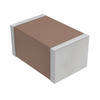 CGA5H2C0G2A103J115AA
CGA5H2C0G2A103J115AA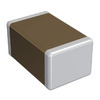 GQM2195C2E2R2BB12D
GQM2195C2E2R2BB12D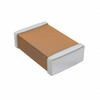 CL05A474KP5NFNC
CL05A474KP5NFNC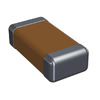 12062C272MAT2A
12062C272MAT2A 04023A820GAT2A
04023A820GAT2A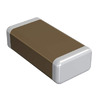 GCM3195C2A302JA16D
GCM3195C2A302JA16D 22251A223JAT2A
22251A223JAT2A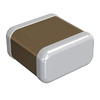 GRM0335C1H2R7CD01J
GRM0335C1H2R7CD01J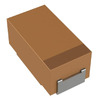 TPSC107K010R0200
TPSC107K010R0200 TPSE686K025S0125
TPSE686K025S0125
- PIC16F77-I/L
- ATMEGA3290-16AU
- MAX6138AEXR25+T
- RC0402FR-07680KL
- PRF18BG471QB1RB
- 2MBI200J-060
- MCC72-14io1
- SEMIX553GB128DS
- T400122208
- INA220AIDGSR
- TUSB7320RKMR
- DM74AS651NT
- RB520S30
- MC74ACT02DTR2
- LT3502AIMS#TRPBF
- TPS2546RTER
- LT8391HFE#TRPBF
- SN74LS292N
- ISO7740DBQR
- MUR460RLG
- T491D476M020AT24787622
- LMV612MMX
- ML4823CQ
- MT47H128M8QTM-25:J
- NJW1172GK
- PF38F5050MOYOCO
- PT7A6527JE
- SN2010WIR1
- TC7WH74FU
- WPC8763LDG
- VI-2WO-EV
- CH47UG-5HR2
- QCPM-9801
- W78C33BP-24
- AT24C64AY1-10YU
- GRM188B11H153JA01D
- DRV8873HPWPR
- MT29C1G12MAAIYAMD-5
- NQ84010TNB